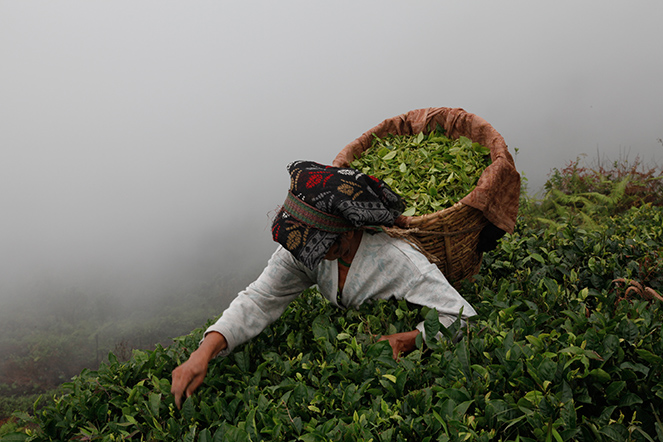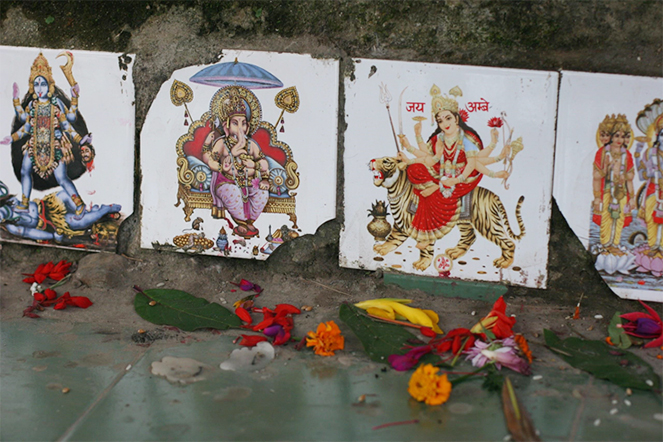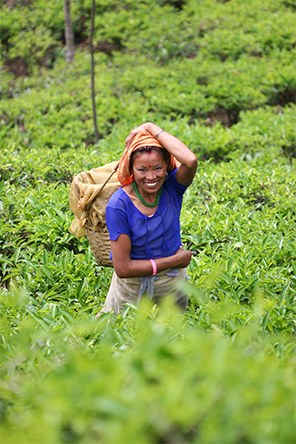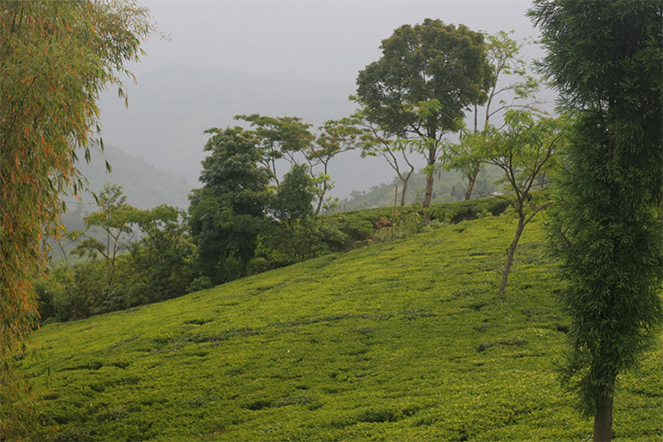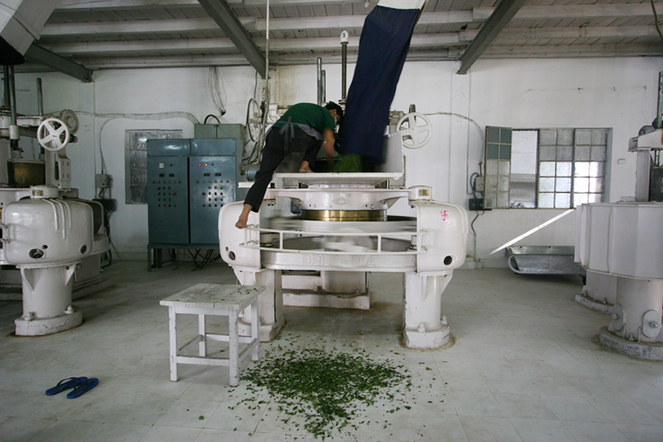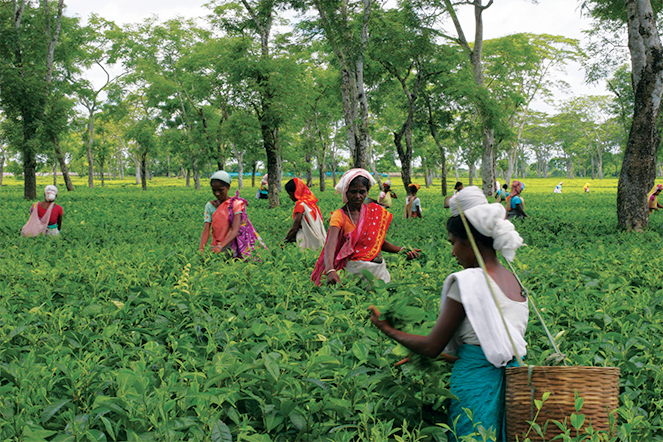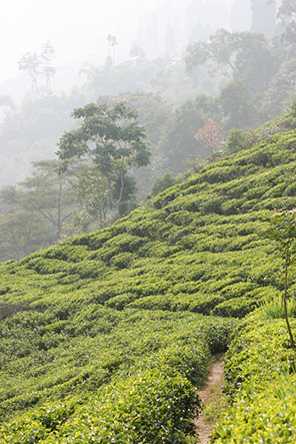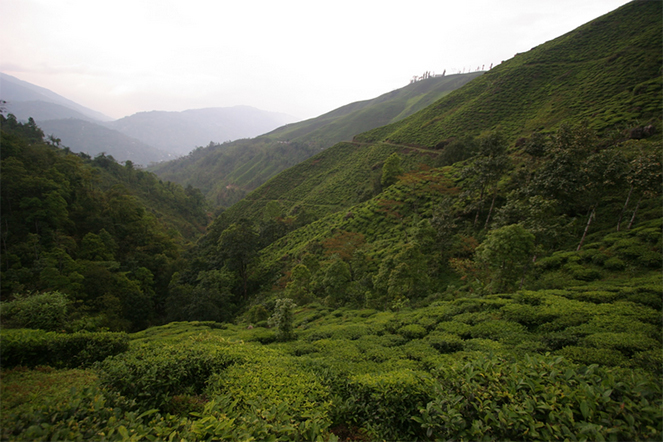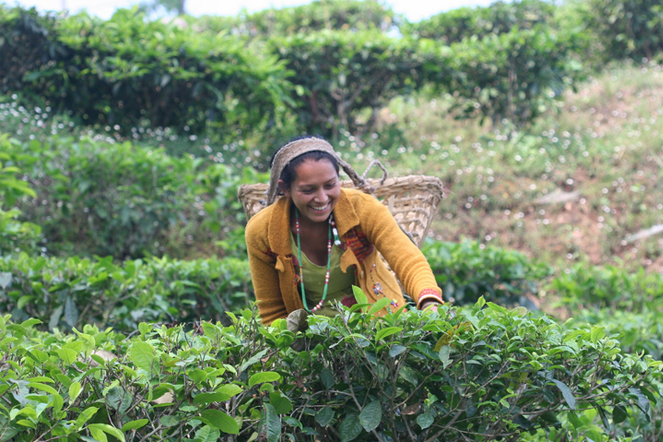The lunch break offers a special opportunity to sit down with the tea pluckers and get to know them. They don’t often get to see buyers, and are even less likely to have a conversation with them. It doesn’t take long before shyness turns into spontaneity. These are special moments which I enjoy very much.
India
First visit to Poobong
Vertiginous slopes and lingering mists form the scenery of Darjeeling. Out walking, a tea plucker appears in the thick fog. She climbs amongst the tea plants with astonishing agility. Poobong, a long-abandoned and inaccessible plantation, is gradually coming back to life. I am visiting it for the first time.
The frenzied pace of the spring harvests
My selection of first-flush Darjeelings is over, the Nepalese season is in full flow, and then it’s the turn of the new-season China teas, before the first Japanese Ichibancha are ready. Between 1 March and 10 May every year, I can taste more than 100 teas every day, not counting the ones I infuse several times, when I’m deciding between different batches. The peak of this pleasant activity, which I always look forward to, takes place around the end of April. At this time of year, so many samples pile up every morning in the packages sent by express mail from Nepal, India, China and Japan, that I sometimes don’t know which way to turn.
Smiling tea pluckers
Tea pluckers work very hard, yet when I meet them in the middle of the fields they greet me with big smiles. They look at me with a happy expression. These radiant faces contrast with the ones we see so often around us. In our cities, life is no easier or harder than on a tea plantation. But sometimes we forget to pay attention to others. We look at each other harshly. We live a bit like strangers. We complain about nothing. I can’t wait to get back to my mountains!
On May 1st, let’s celebrate nature
Here in France, May 1st is a public holiday. We are going to look at the flowers coming into bloom. We will go for a walk. Admire nature, in all its shades of green. Then we will sit down and contemplate it all. Take our time. Breath. Inhale the spring air. Feel the earth waking up. Listen. Listen to the birds singing, the leaves rustling. And then the kettle whistling.
Rolling Darjeeling leaves
When you read tasting notes on Darjeeling teas, you learn that the leaf can be more or less rolled, depending on the batch. This is what the rolling looks like. As soon as the leaves have finished wilting, on the upper level of the building, they are dropped (see photo) into this container, which has a press. Rolling, as it is performed in Darjeeling, takes just a few minutes. It prepares the leaves, by lightly crushing them, for the following stage: oxidation.
The teas and landscapes of Assam: an incredible contrast
Assam teas have scents of honey, tobacco and spices and a very pronounced aromatic profile, unlike some of the flat countryside in this region. The teas are particularly astringent, and here too, the vocabulary used to describe this sensation contrasts with the words we might use to depict the landscape. Astringency is marked by a contracting of the tissues of the palate, while this beautiful field of tea relaxes me as soon as I see it.
Some good news from Darjeeling despite the unfavourable weather
The news I’m getting from Darjeeling is not very good. The planters are disappointed by the small quantities of tea harvested in March. This is due to low temperatures and a lack of sunshine and rain. So far, production is down by almost a third. However, as long as you act quickly, there are still some very fine teas. I have already bought several batches from gardens where the quality is improving year on year, like Gielle, Rohini and Teesta Valley. And a tiny batch of “Puttabong SFTGFOP1 Moondrops”: anyone who gets a chance to taste this tea will love it.
Let’s celebrate spring!
To celebrate the arrival of spring with you, what better than to take a break together, put the kettle on, sit down in an upright position, empty our minds, shut our eyes, inhale deeply while the leaves infuse, get ourselves in the right frame of mind, and prepare to drink tea. And then, to open our eyes on this beautiful landscape, to nature reawakening, the first buds opening, the return of life.
The first selections of first-flush Darjeelings
As happens every year at the same time, the first samples of first-flush Darjeelings are starting to arrive. There are never many during the first week, then during the peak of the season, around the end of March, I can taste dozens every day. Each one represents a very small batch of about 100 kilos. I have just chosen two: the Rohini “early spring” and the Longview FTGFOP1 ex-5. They are characterised by their fresh, vegetal, floral and zesty notes.


